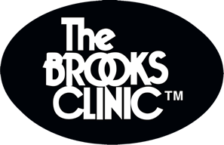
Balance problems make it difficult for people to maintain stable and upright positions when standing, walking, and even sitting. A balance problem exists when an individual has difficulty maintaining a stable and upright position. There are a range of factors that can cause balance problems:
- Muscle weakness
- Joint stiffness
- Inner ear problems
- Certain medications (such as those prescribed for depression and high blood pressure)
- Lack of activity or a sedentary lifestyle
- Simple aging
Our doctors develop individualized physical activity plans to help improve the strength, stability, and mobility of people with balance problems, based on each person’s needs. Your provider and your therapy assistant will work together to makes sure we are prescribing active movement techniques and physical exercise to improve these systems, including strengthening, stretching, propulsion exercises, visual tracking, and inner ear retraining.
Your physical therapist will help you in many ways:
Reducing Fall Risk: Your physical therapist will assess problem footwear and hazards in your home that increase your risk of balance problems or falling. Household hazards include loose rugs, poor lighting, unrestrained pets, or other possible obstacles. By addressing specific problems that are found during the examination, your physical therapist will help you regain confidence in your balance and your ability to move freely, and perform daily activities. As you build confidence in your balance and physical ability, you will be better able to enjoy your normal daily activities.
Improve Mobility: Most importantly, your physical therapist will help you regain the ability to move around with more ease, coordination, and confidence. They will develop an individualized treatment and exercise program to gradually build your strength and movement skills.
Improve Balance: Your physical therapist will teach you exercises for both static balance (sitting or standing still) and dynamic balance (keeping your balance while moving). They will keep an eye on your progress, and increase these exercises as your skills improve.
Improve Strength: Your physical therapist will teach you exercises to address muscle weakness, or to improve your overall muscle strength. Strengthening muscles in the trunk, hip, and stomach (i.e., “core”) can be especially helpful in improving balance. Various forms of weight training can be performed with exercise bands, which help avoid joint stress.
Improve Flexibility and Posture: Your physical therapist will determine if any of your major muscles are tight, and teach you how to gently stretch them. The physical therapist will also assess your posture, and teach you exercises to improve your ability to maintain proper posture. Good posture can improve your balance.
Increase Activity Levels: Your physical therapist will discuss activity goals with you, and design an exercise program to address your individual needs and goals. Your physical therapist will help you reach those goals in the safest, fastest, and most effective way possible.
Once your treatment course is completed, your physical therapist may recommend that you transition to a community group to continue your balance exercises, and maintain a fall-proof home environment.
It’s always important to consult your doctor before starting any exercise program if you have any health issues. Call The Brooks Clinic at (405) 943-0303 to request an appointment with one of our physical therapists.
Accident Care & Injury Treatment Clinic Locations
Our auto accident care clinics are available either by appointment or as walk in appointment at any of our 5 clinic locations after a car accident. Remember, there’s no out of pocket expense.
Accident Care At The Brooks Clinic Midtown
820 NW 13th Street
Oklahoma City, OK 73106
Phone: (405)335-6099
Accident Care At The Brooks Clinic, NW Exp
6401 NW Expressway
Oklahoma City, OK 73132
Phone: (405)993-4084
Accident Care At The Brooks Clinic Moore
2313 S. I-35 Service Rd,
Moore, OK 73160
Accident Care At The Brooks Clinic MWC
2801 S Douglas Blvd,
MWC, OK 73130
Accident Care At The Brooks Clinic N Penn
12600 N Penn
Oklahoma City, OK 73120
Phone: (405)266-4308
